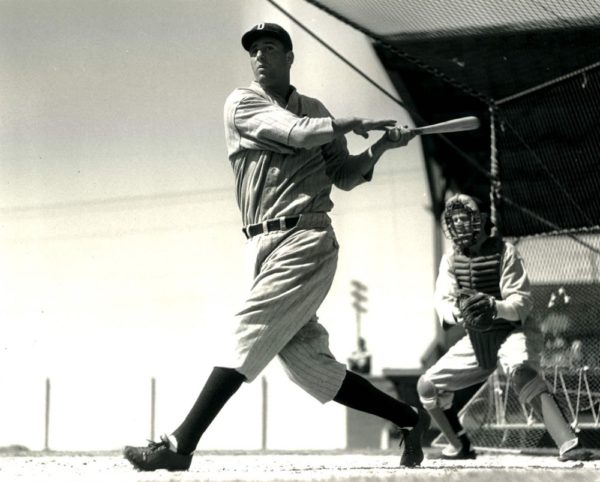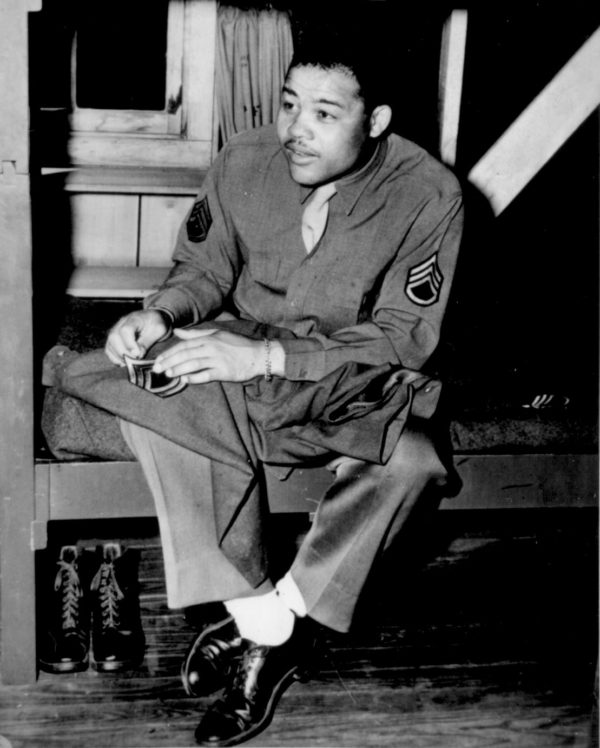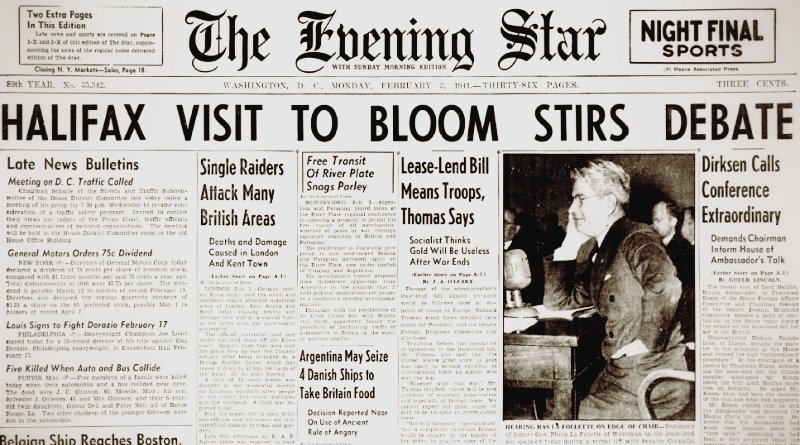World War II Chronicle: February 3, 1941
Click here for TODAY’S NEWSPAPER
Grantland Rice’s sports column on page 16 highlights Hank Greenberg, Bob Feller, and Joe Louis — three of America’s most-famous athletes. All will soon be wearing a military uniform.

Greenberg finished 1940 batting .340 for the Detroit Tigers, leading the league in homeruns, doubles, and runs batted in and earning American League MVP. The American League’s first player to register for the draft squeezed in 19 games before reporting for duty at Fort Custer, Mich. where he will become a tank gunner. Sgt. Greenberg was honorably discharged when Congress cut loose all draftees over age 28 two days before the attack on Pearl Harbor, but re-enlisted as a sergeant with the Army Air Corps in February, who sent him to officer candidate school. Lt. Greenberg volunteered for overseas assignment and shipped out to the China-Burma-India Theater during the first deployment of the B-29 Superfortress, serving in the 58th Bomber Wing and 20th Bomber Command.
Despite serving longer than any player (47 months), Capt. Greenburg was the first major league veteran to return to the field. He hit a homerun, walked, and scored twice on his first day back (July 1, 1945) as the Tigers beat the Philadelphia A’s 9-5.
Finishing second in the AL MVP vote was Cleveland’s 21-year-old pitching sensation Bob Feller (Joe DiMaggio, who would join the Army, was third). Feller led the majors in wins (27), strikeouts (261), complete games (31), and led the American League in most everything else in 1940. The sole breadwinner for his family, Feller had a 3-C draft deferment, but he enlisted in the Navy anyways the day after Pearl Harbor — becoming the first major leaguer to enlist.
Feller served aboard the battleship USS Alabama, guarding convoys in the North Atlantic and supporting numerous invasions in the South Pacific, reaching the rank of a chief petty officer. He pitched a complete game on his first game back, hurling 12 strikeouts (including two by Hank Greenberg) and only allowed four hits as the Indians beat the Tigers 4-2.
Baseball’s top athletes returning to the field after nearly four years of war, hitting homeruns and striking out people on their first game as if they hadn’t missed a beat sounds too good to be true, but the scorecards are linked above.

Our third superstar-turned-serviceman is the Joe Louis, perhaps the greatest heavyweight boxer of all-time. Louis was on his third year (of 12 straight years) of his reign as heavyweight champions, having recently defeated challengers Al McCoy (Dec. 16 at Boston Garden), Red Burman (Jan. 31 at New York City’s Madison Square Garden), and was about to face Max Durazio at Philadelphia’s Convention Hall (Feb. 17) for the 14th fight defending his title.
Louis will voluntarily enlist in the U.S. Army in January 1942 (after six more successful title defenses), and serves in a segregated cavalry unit out of Fort Riley, Kansas.
Louis’ celebrity status comes in handy on occasion, such as when he helps several black soldiers stationed at Fort Riley whose officer candidate school applications were being delayed by their chain of command. One of those soldiers is future Hall of Famer Jackie Robinson, who would receive his commission in January 1943.
Evening star. (Washington, D.C.), 3 Feb. 1941. Chronicling America: Historic American Newspapers. Lib. of Congress.
https://chroniclingamerica.loc.gov/lccn/sn83045462/1941-02-03/ed-1/
